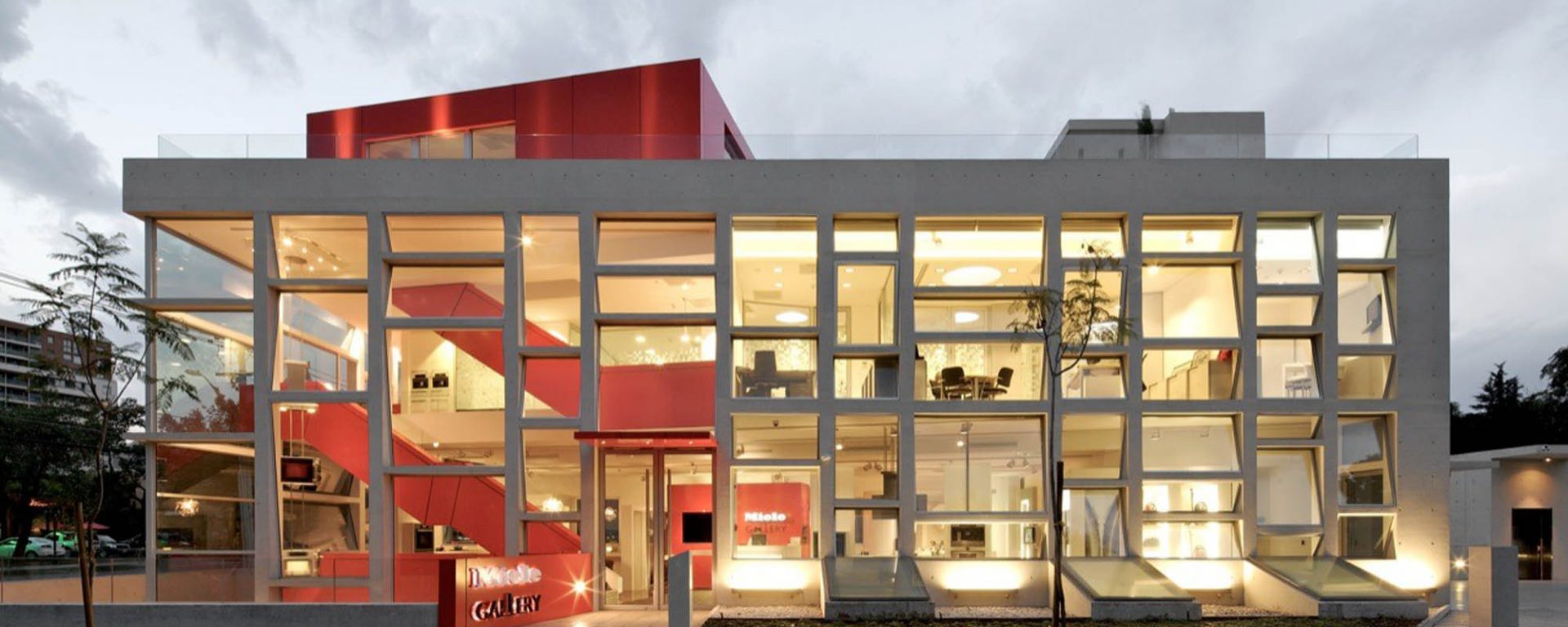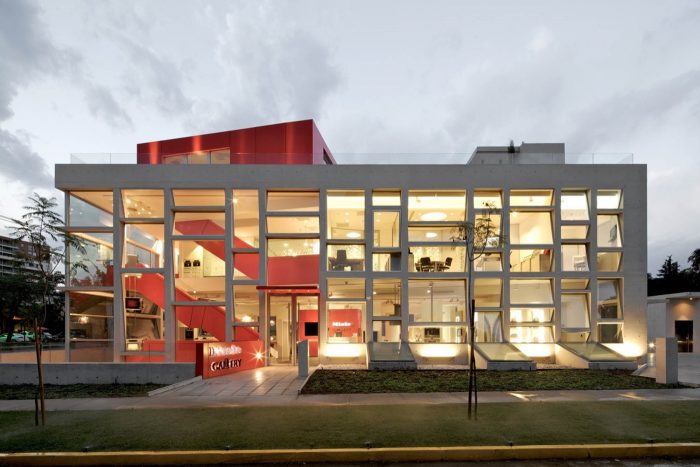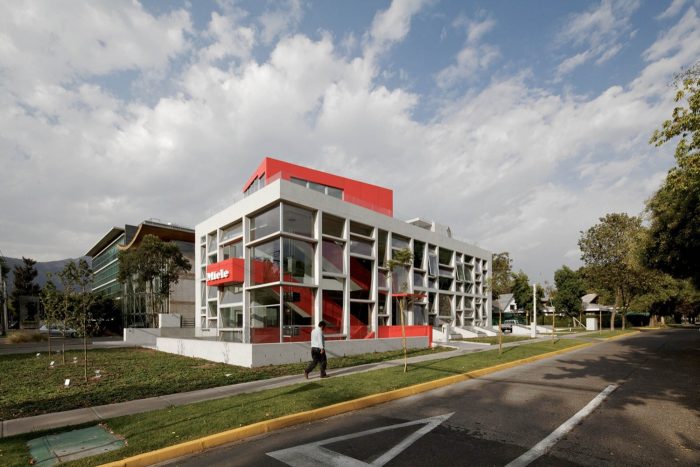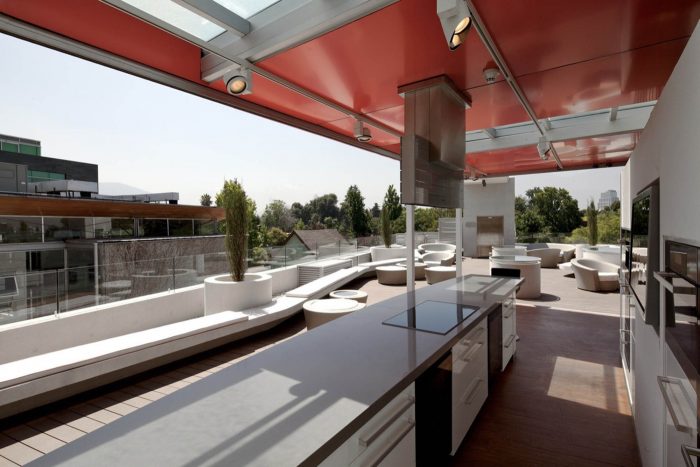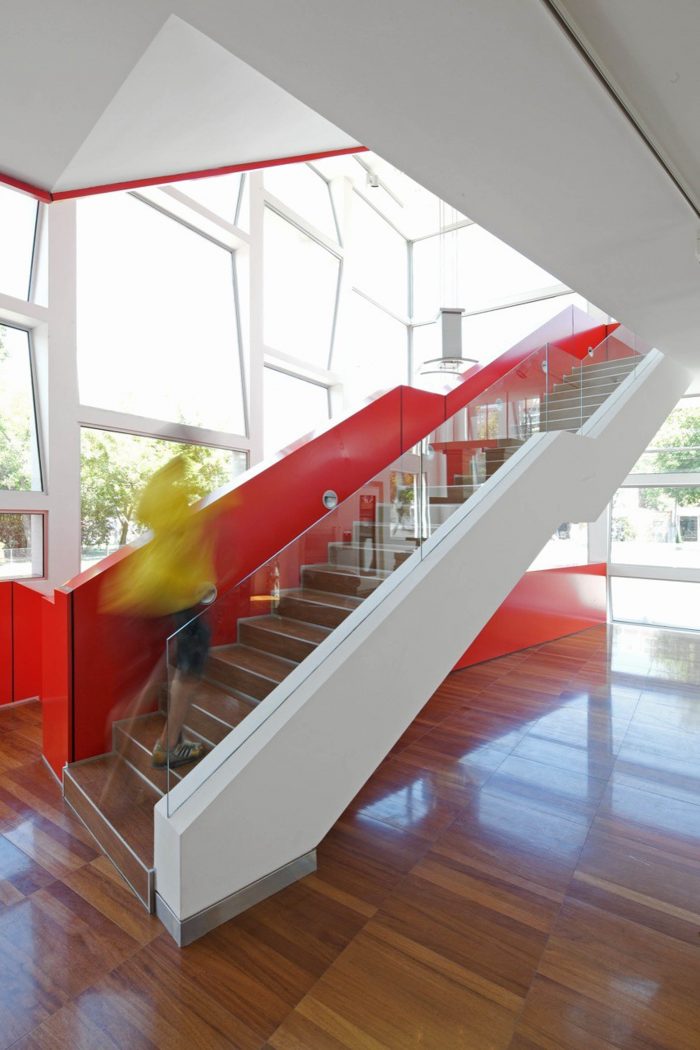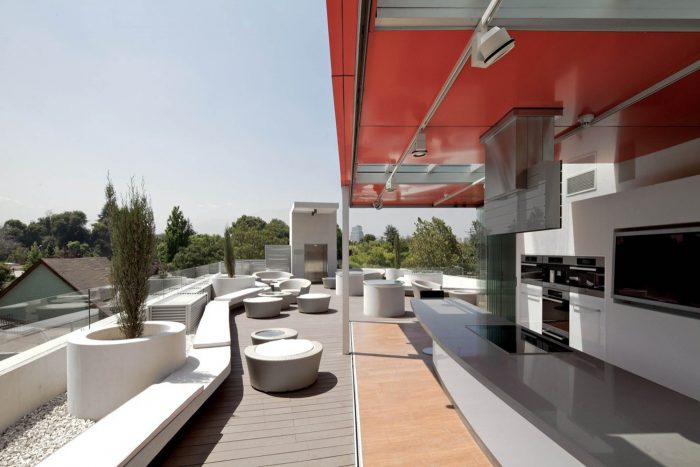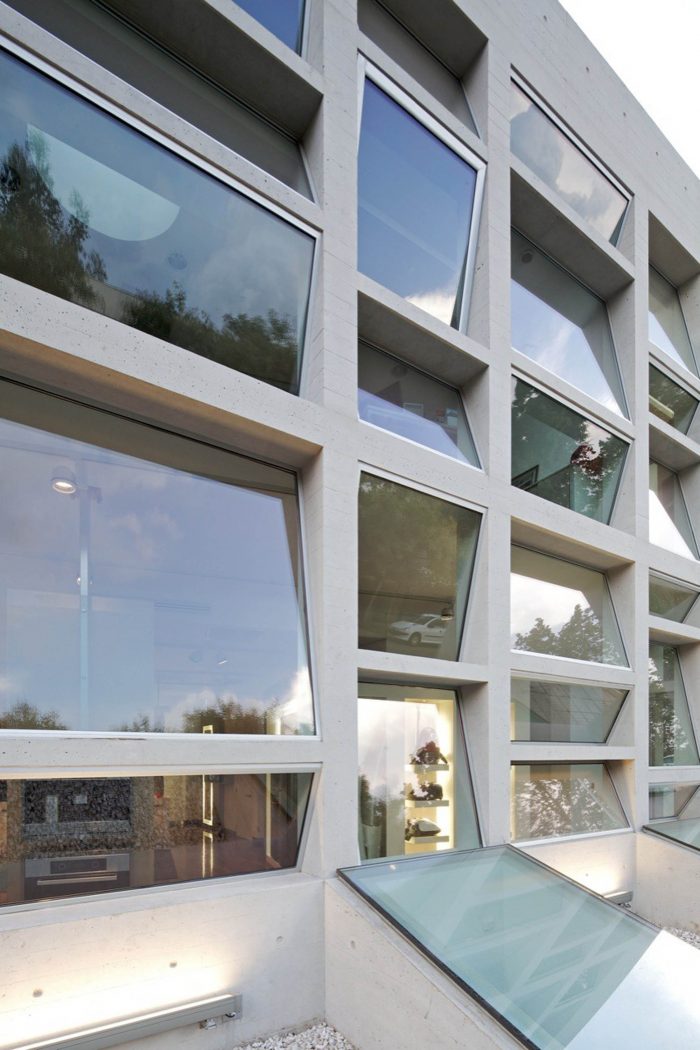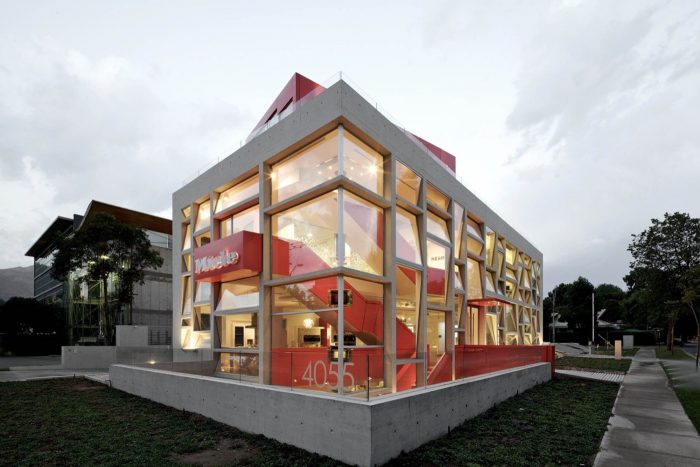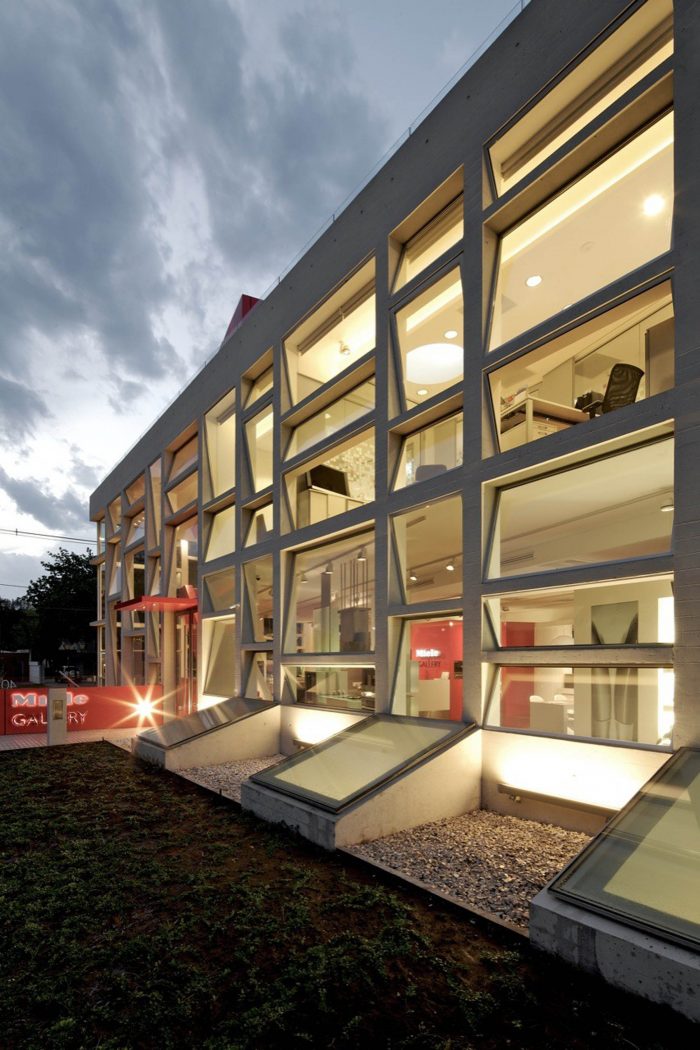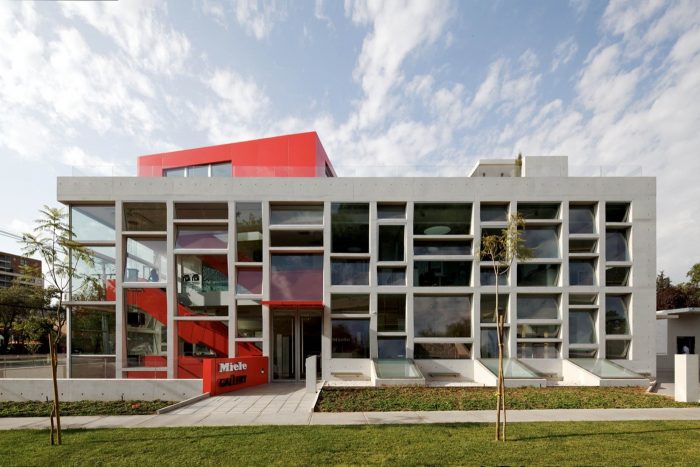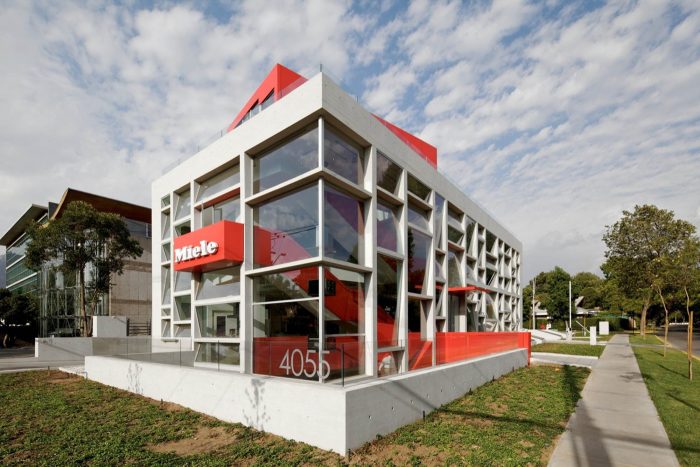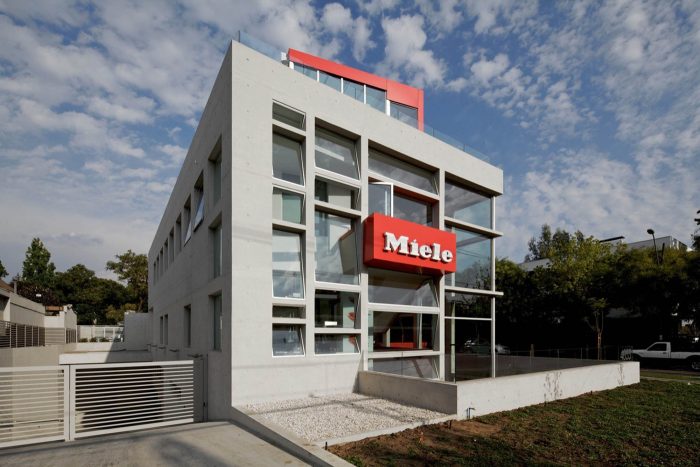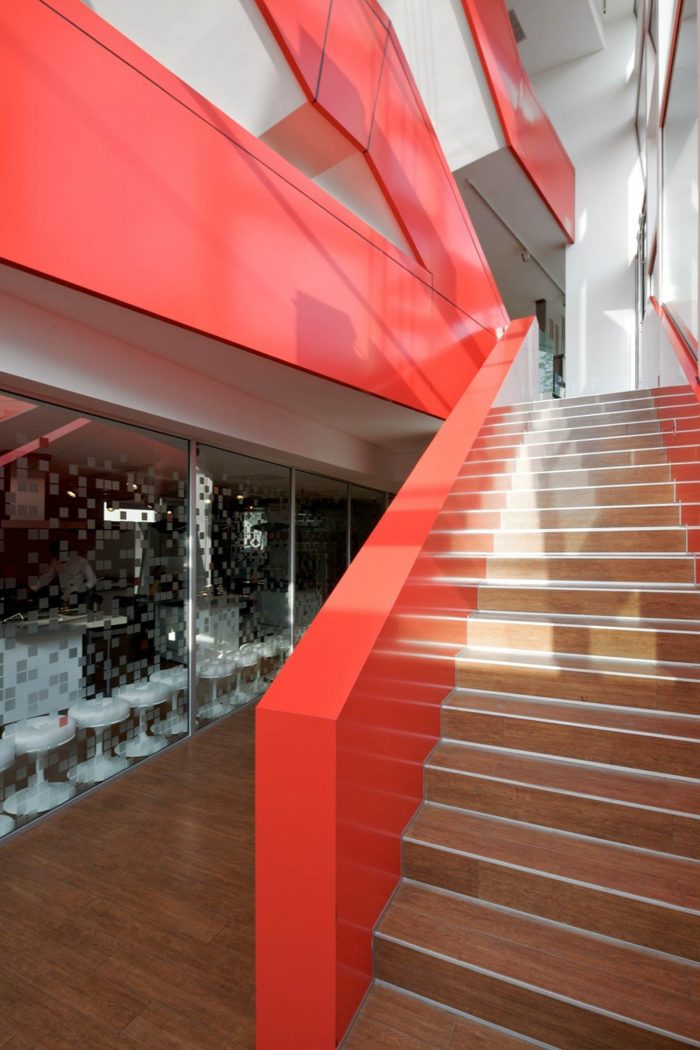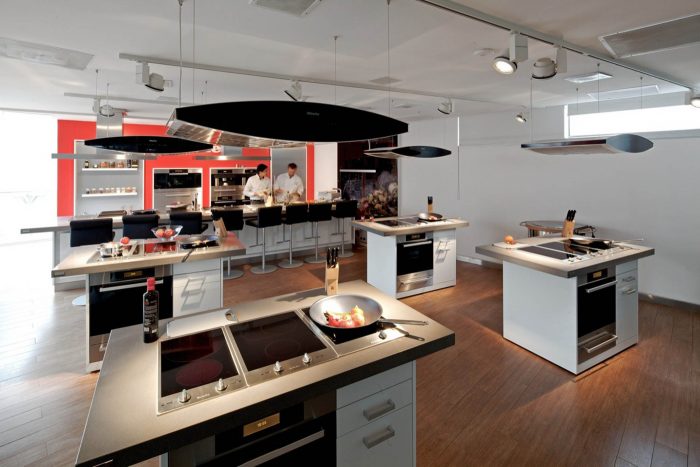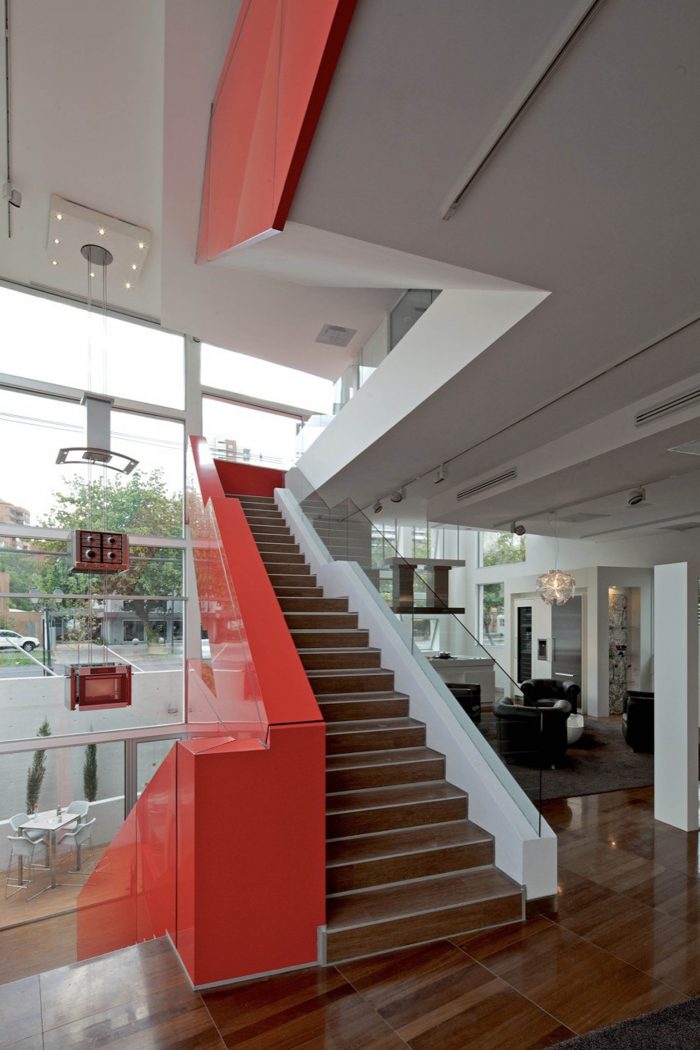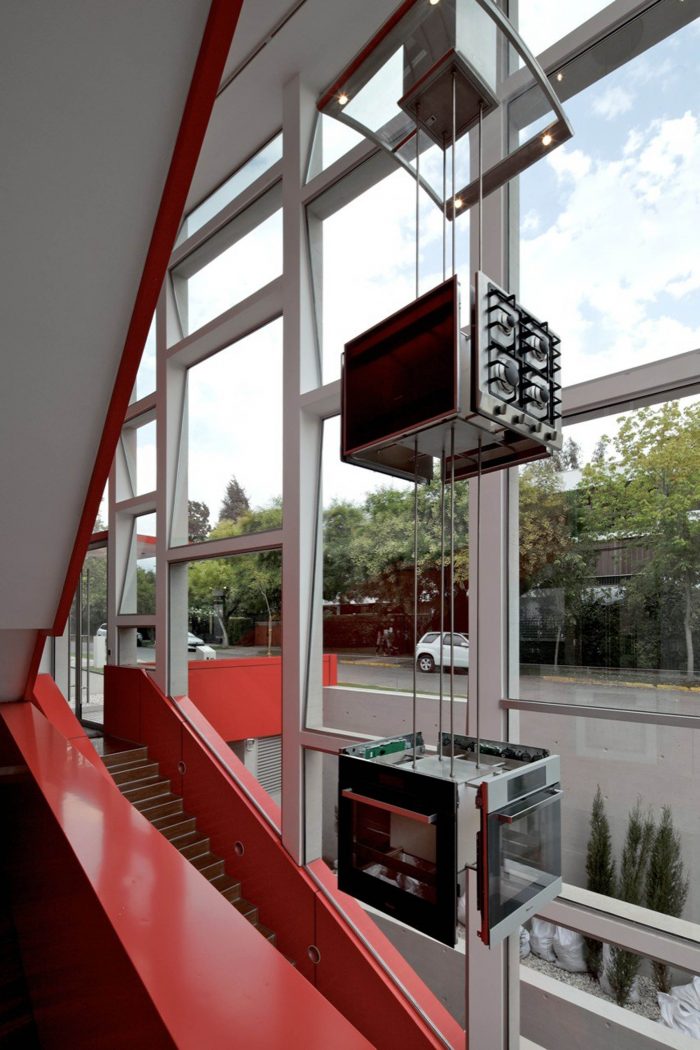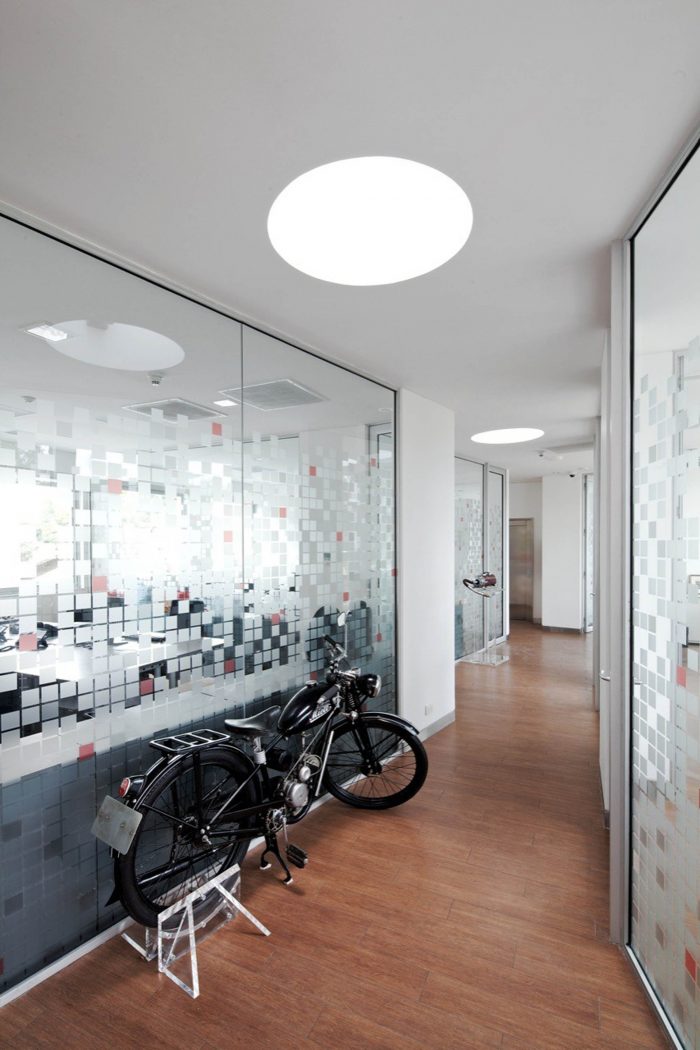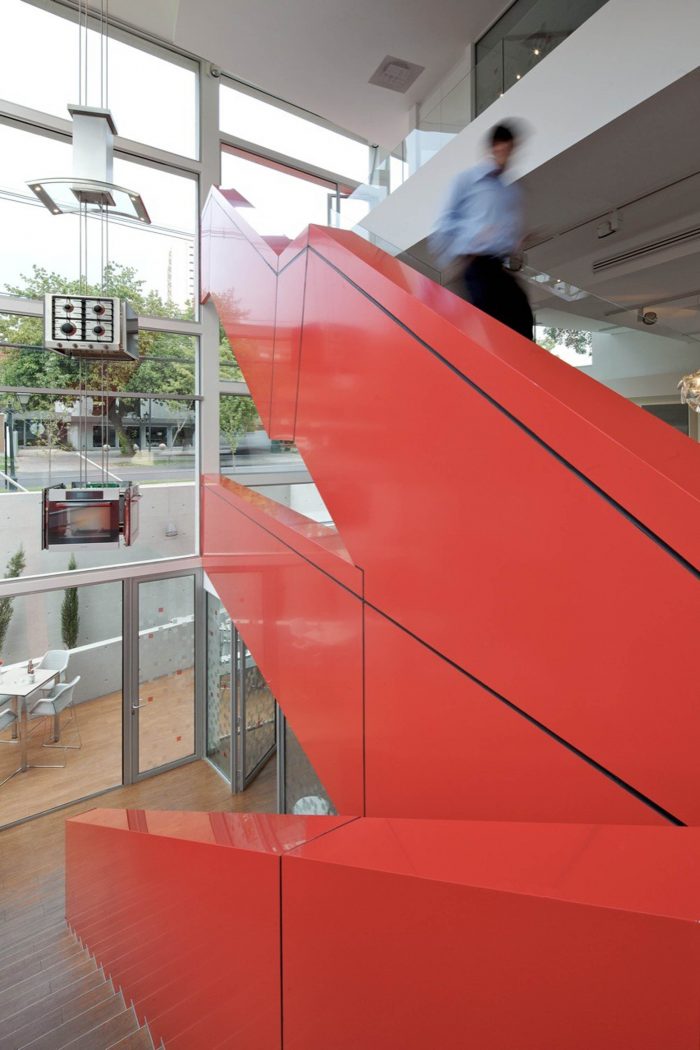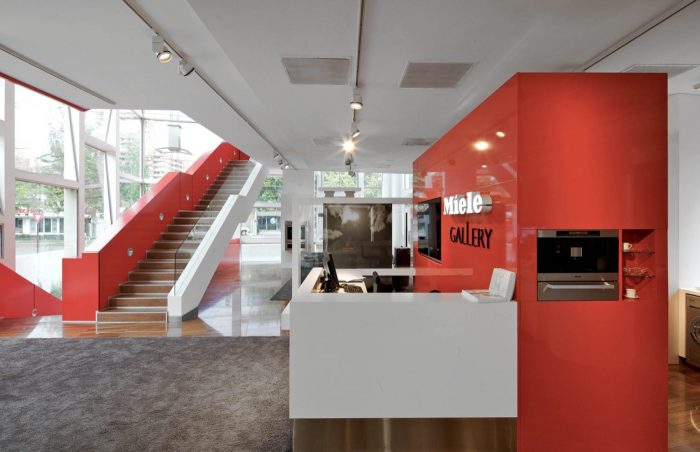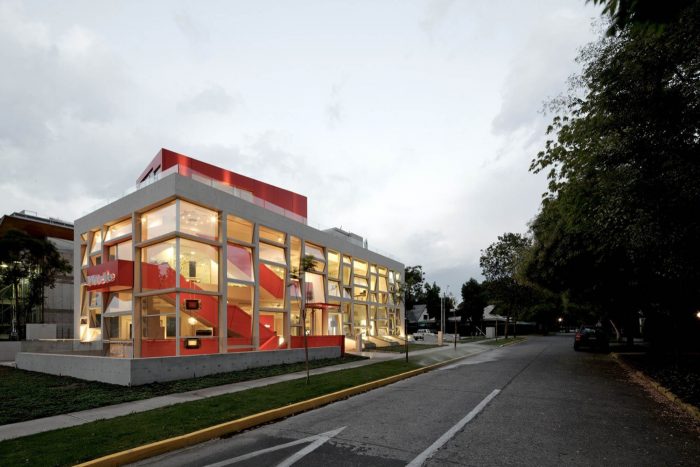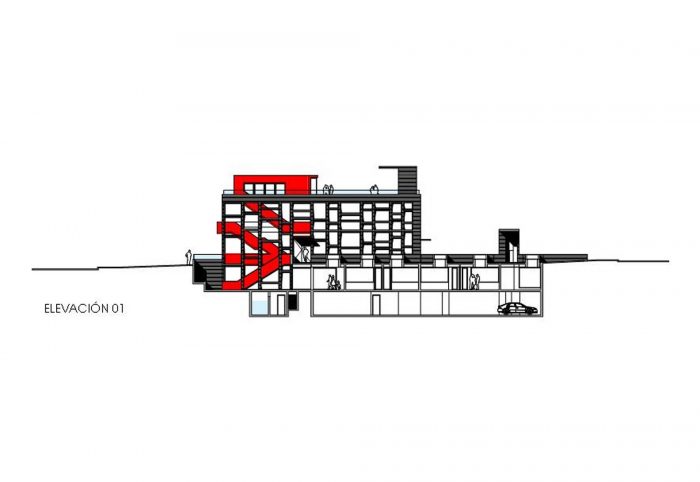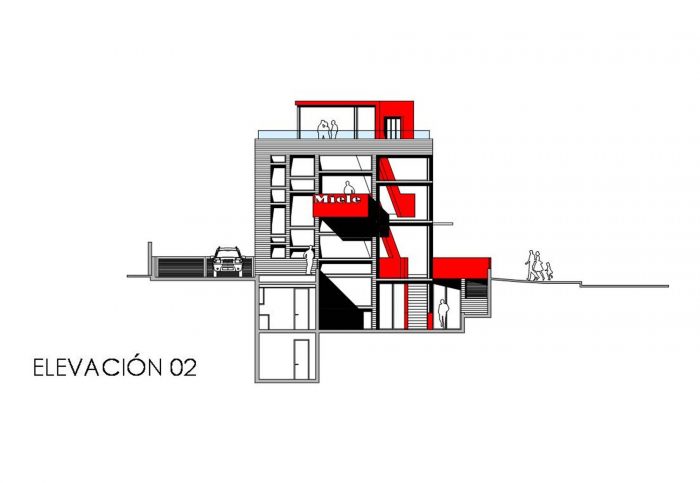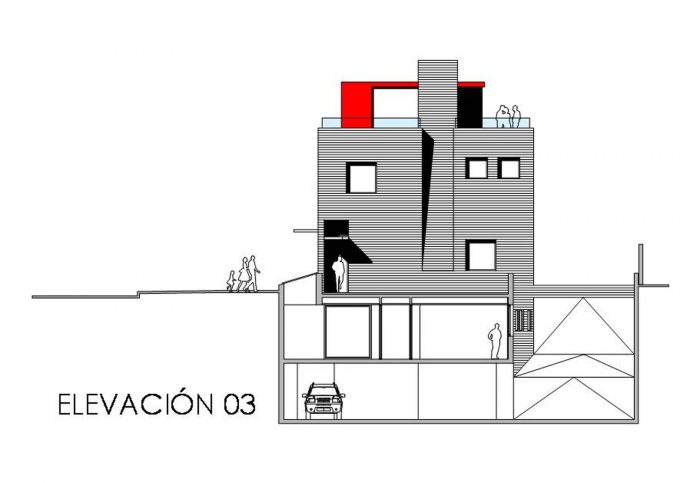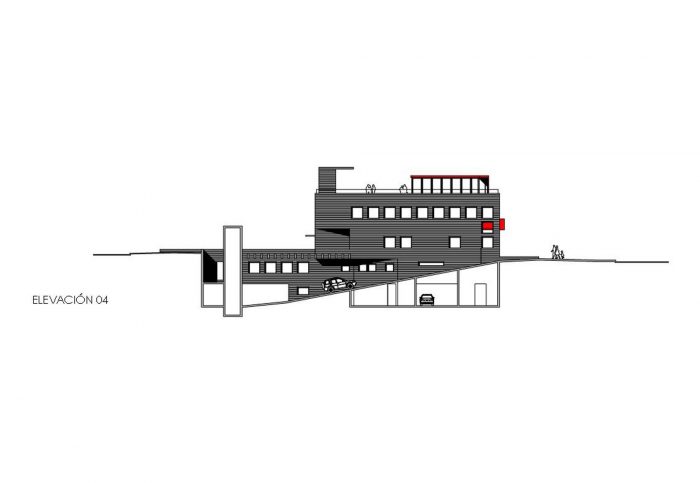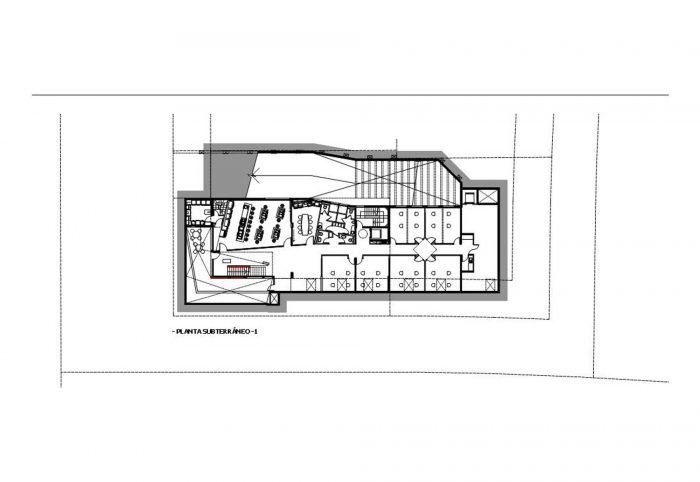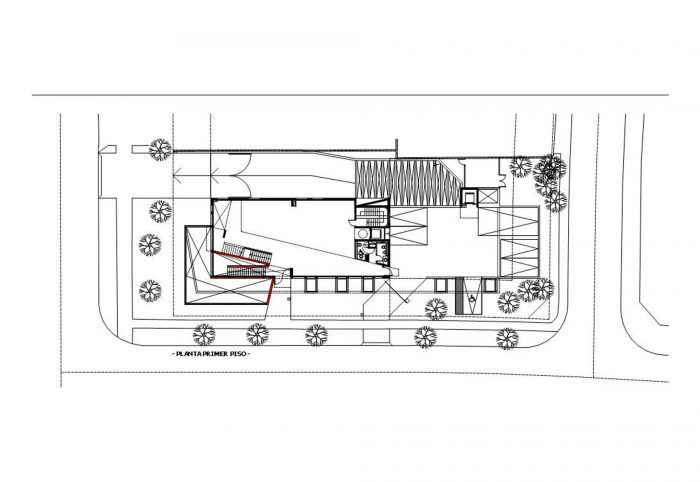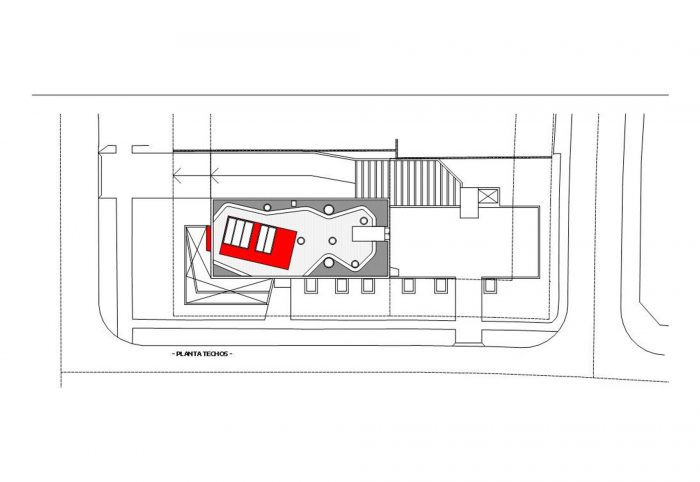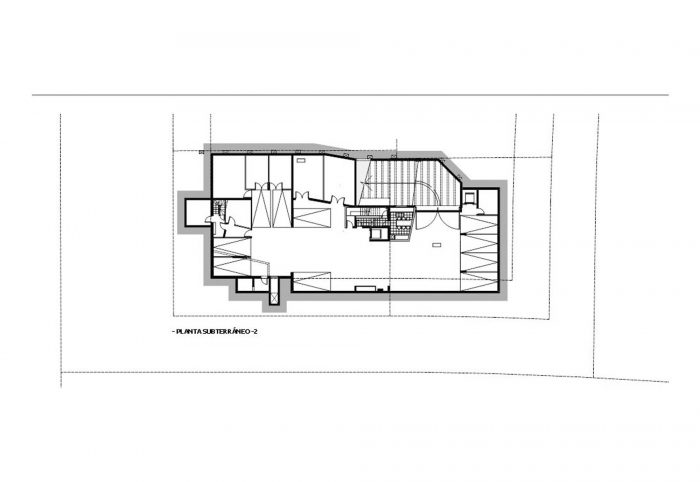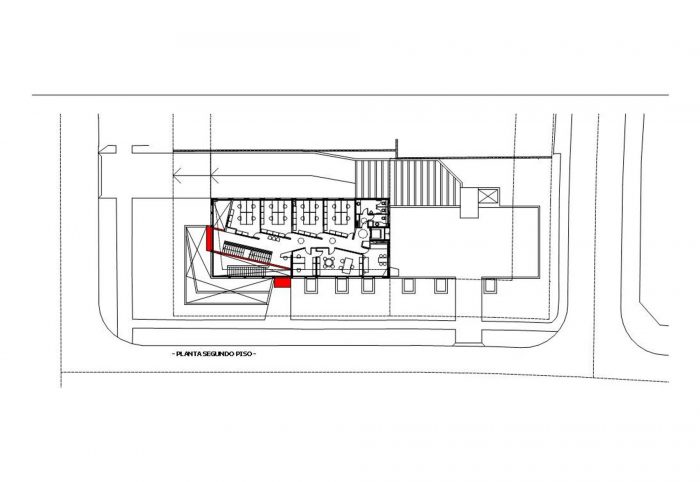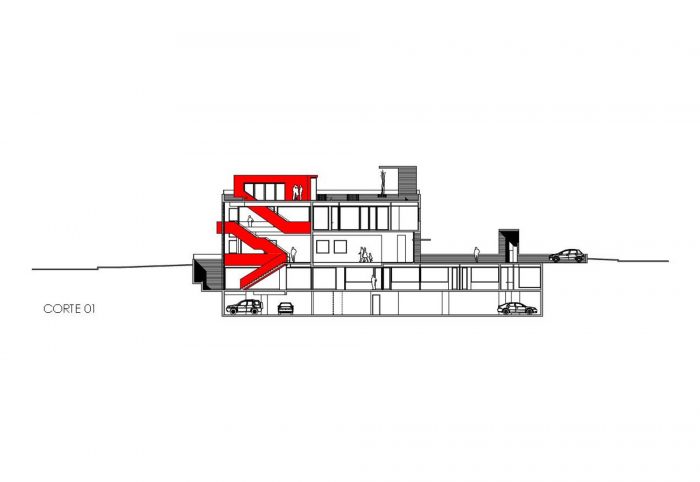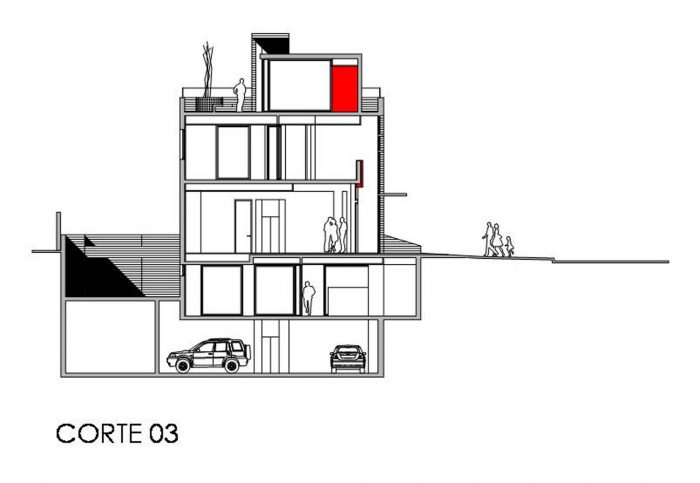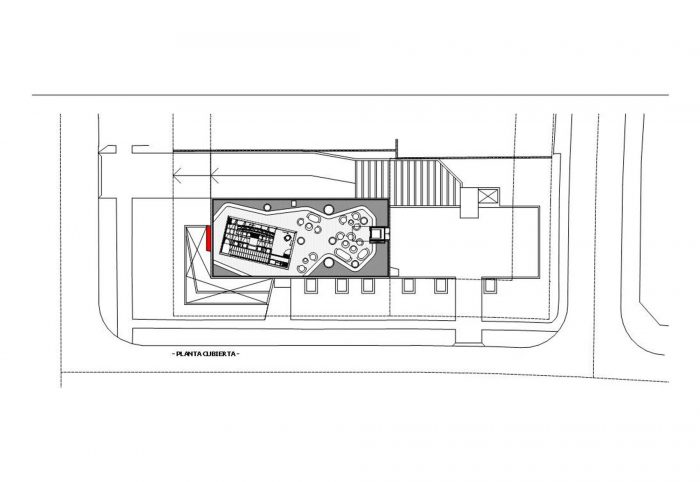由Miele公司为这次建筑竞赛选定的地点是一个住宅区,有低、中、高密度的住宅,周围有公园和广场。它与新的市议会大厦和Bicentenario公园相邻。
Chosen by Miele for this architecture competition, the site is a residential neighborhood with residences in low, medium and high density, surrounded by parks and squares. It is in close proximity to the new City Council Building and Bicentenario Park.
Nueva Costanera大道是一条重要的商业和文化街道,充满了艺术画廊、餐馆、银行和商店。
我们的建筑方案是一个向角落(最公共的地方)开放的建筑,由混凝土和倾斜的水晶组成的外墙。这种立面允许光线反射,建筑的透明度为街道、人和车辆创造了一个大型展示窗口。
Nueva Costanera Avenue is an important commercial and cultural street full of art galleries, restaurants, banks and shops.
Our architectonic proposal is a building that opens to the corner (the most public place) in a play of façades of concrete and inclined crystals. This façades permits light to reflect, and the transparency of the building creates a large display window for the street, both people and vehicles.
这个想法的内部结果允许所有层面的连接。空间是一个建筑学上的迷宫路径,甚至可以穿透地下空间,这是一个独特的光线和自然通风的可能性。
The interior result of the idea permits the connectivity of all the levels. Spaces are an architectonic labyrinths path that are even penetrate the underground spaces, a unique possibility of light and natural ventilation.
在我们的工作中,一个永久性的(第六立面)有双重目的:增加土地(稀缺资源)和增加办公室和展览区周围的开放和半开放空间,结合亲密性和开放性。埋藏并向地下开放,并启用一个新的景观,突出近墙的压缩存在,作为通往天空的门。
进入整个建筑的循环通道是用红色的钢材(红色是Miele公司的颜色),与建筑的材料性形成对比,白色混凝土中加入了二氧化钛。这条红色带子与白色形成了鲜明的对比,贯穿了所有楼层,一直到屋顶。
A permanent in our work (sixth façade) is a double purpose: increase the land (scarce resource) and increase offices and exhibition area around to open and semi open spaces that combine intimacy and openness. Burying and open to the underground and enable a new landscape which highlights the compressed presence of near walls as a doorway to the sky.
The circulation path into the entire building was created in red steel (red is the Miele corporate color) leaving a contrast to the materiality of the building, white concrete with titanium dioxide incorporated. This red strip distinguishes over the white as a fauve and runs over all levels to the roof.
屋顶被设想为第五个立面,创造了一个带有酒吧的大露台,在树叶的高度上是一个聚会场所。从那里可以看到安第斯山的浩瀚,山丘和附近的绿色。
在我们所有的作品中,我们也坚持使用隔断墙作为建筑的支撑(第七立面)。在这种情况下,两条街的墙都是一个新的全景,使一个新的景观成为可能,并为建筑提供一个新的场所。
The roof is conceived as the fifth façade creating a big terrace with a bar, a meeting place in the height of the foliages. From there can see the immensity of the Andes Mountain, the hills and the green of the neighborhood.
As in all our works, also we insist in the use of dividing walls as architectonic support (seventh façade). In this case the walls of both streets characterize a new panorama, making a new landscape possible and a new place for the building.
这个项目代表了客户和建筑师之间持续对话的高潮,对于我们看待和理解建筑设计过程的方式至关重要。在这个项目中,正如在许多情况下,客户的故事使许多灵感和想法融入到建筑中。
建筑的可持续性
Miele建筑的可持续性主要是通过使用第五、第六和第七个外墙。这些许可将建筑、热和冷分开,创造了自然隔离、通风和照明。其他被实施的可持续发展做法包括太阳能电池板和灰水处理。
This project represents the culmination of ongoing dialogues between client and architect, essential to our way of seeing and understanding the architectural design process. In this as in many cases the client story allows many inspirations and ideas that integrate into the architecture.
Building sustainability
The sustainability of Miele building is principally by the use of the fifth, sixth and seventh façades. These permits separate the building, heat and cold, creating natural isolation, ventilation and lighting. Other sustainable practices that were implemented include solar panels and gray water treatments.
Architects: Gonzalo Mardones V Arquitectos
Year: 2011
Photographs: Nico Saieh
City: SANTIAGO
Country: CHILE

